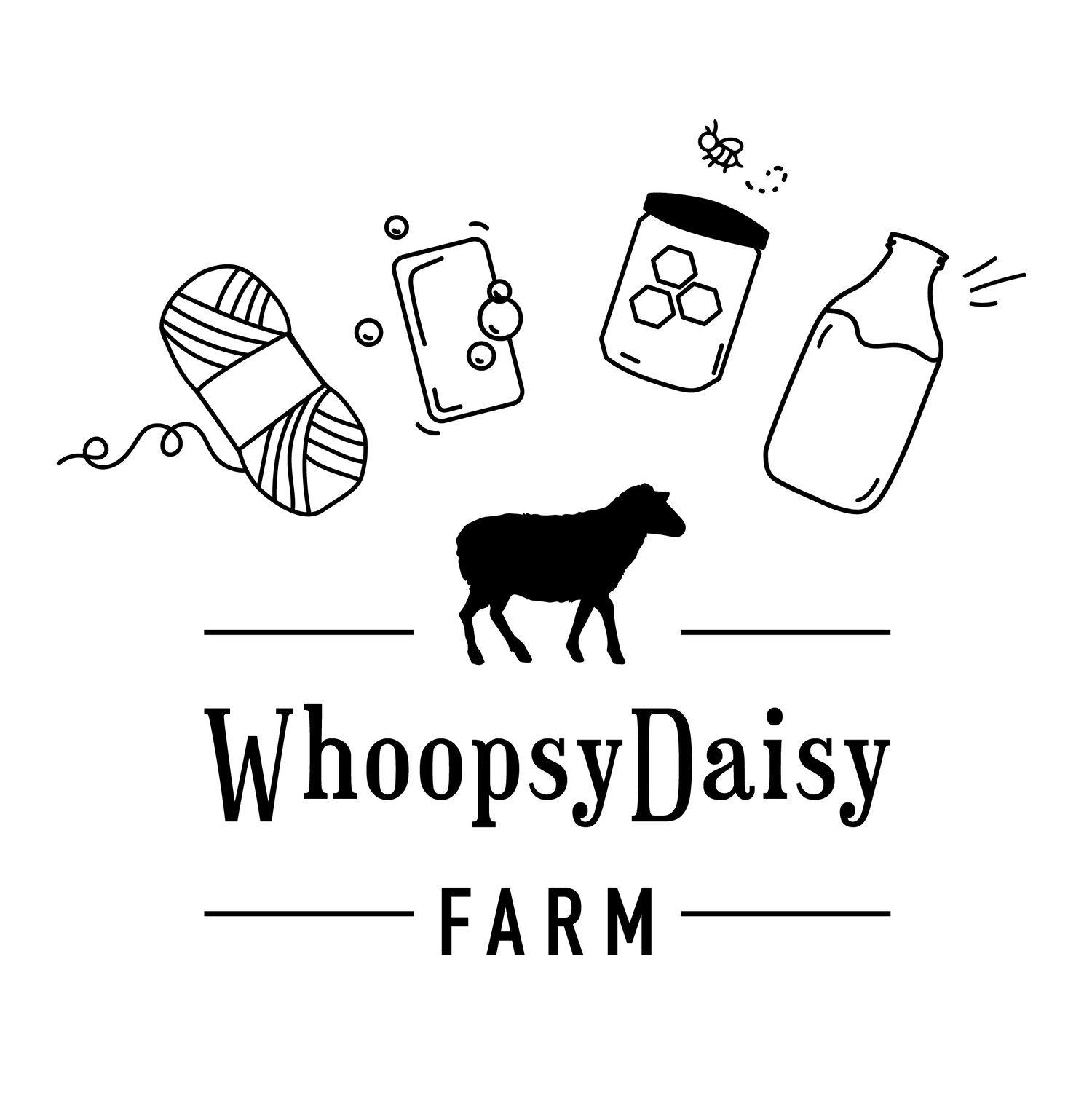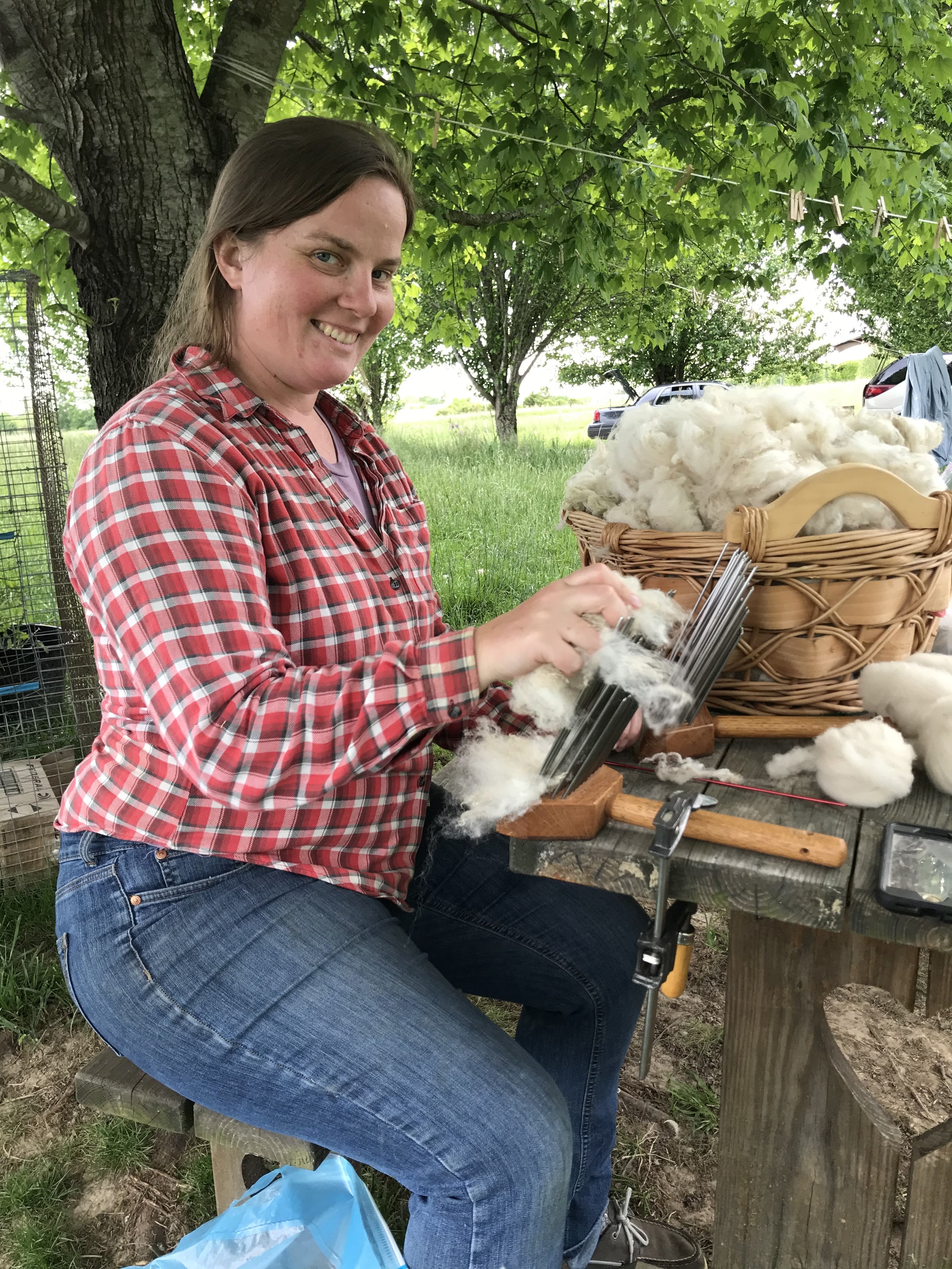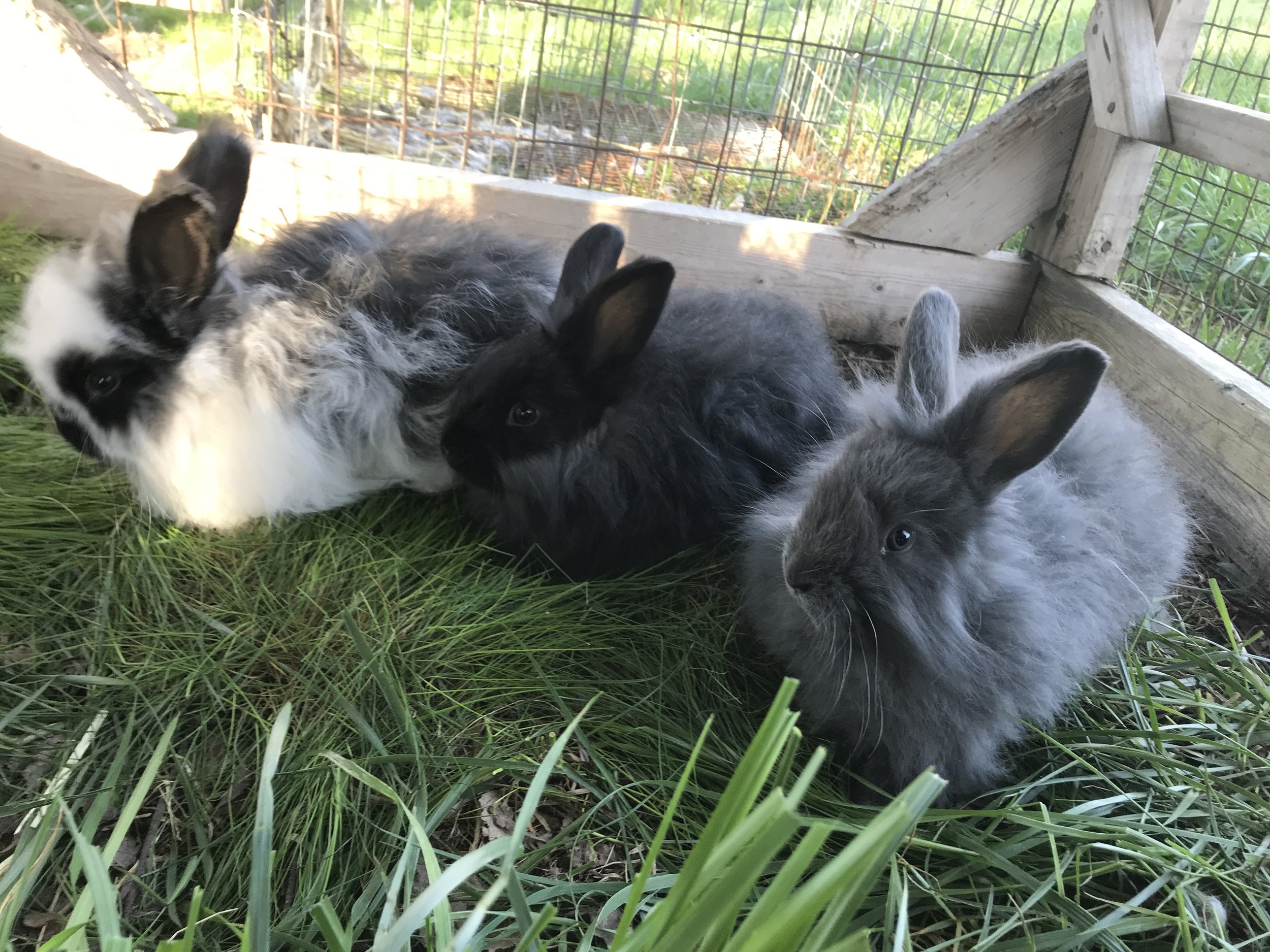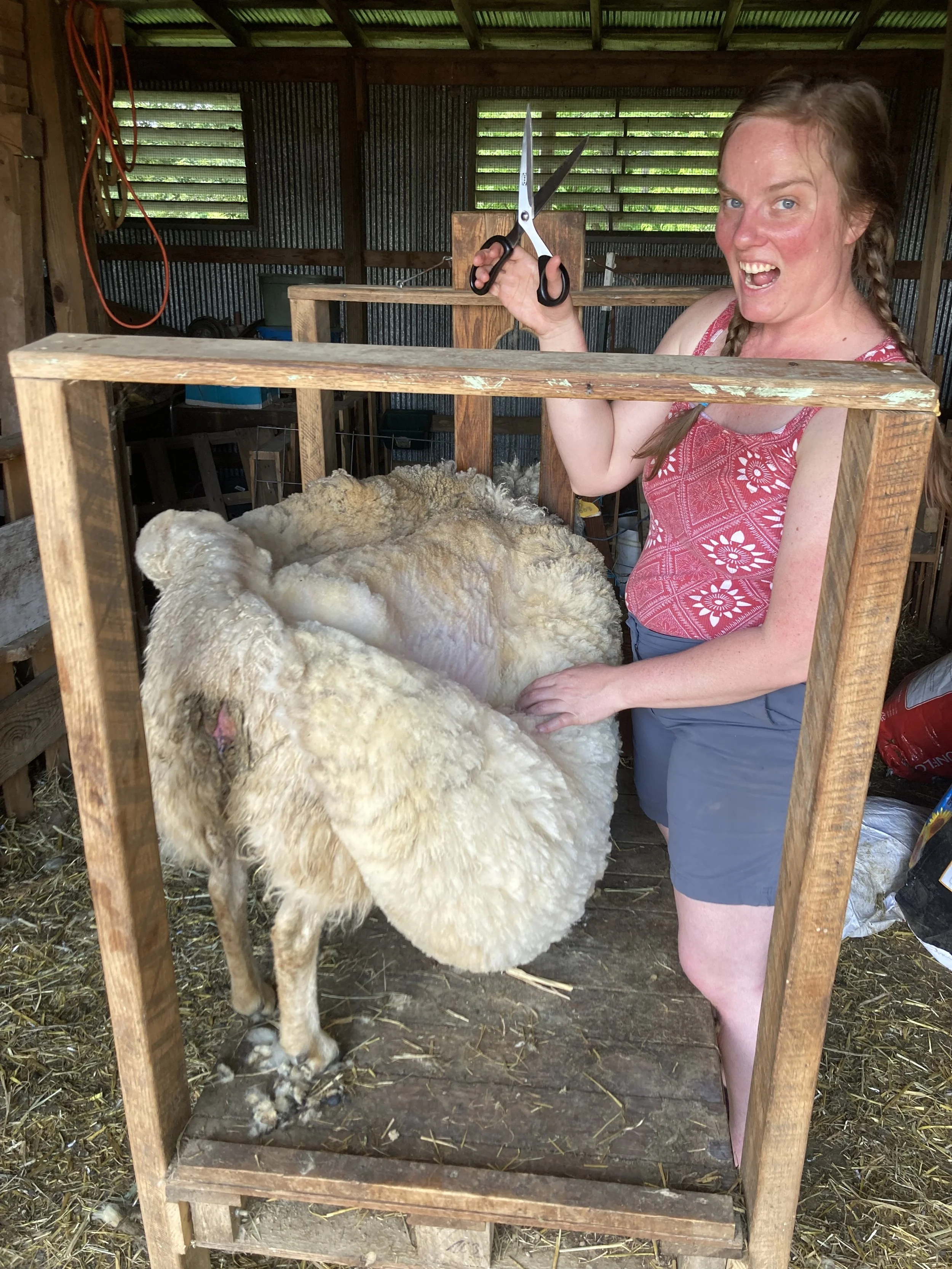For the Love of Wool
I’m taking a quick break from my posts about dairy sheep specifically to address a ‘side product’ from dairy sheep that seems to cause a lot of hesitancy in those interested in going this route.
Wool.
Apparently wool is cause for all kinds of consternation.
Using the wool combs from Sharon I used as a child in her old yarn shop in New Mexico
This baffles me, because I am a wool enthusiast.
I can’t help myself, I was influenced at a young, formative age.
My best friend growing up had a yarn shop and a fiber farm - meaning they had two Llamas, two or three sheep, and about eighteen Angora rabbits. Computer time was earned by doing daily chores and spinning yarn for the Etsy shop. If I came over to play, I was two extra hands to be put to work carding wool or sorting inventory.
Not only did this ruin my views on child labor, but it ruined my ability to joyfully hop into Walmart or Hobby lobby and use the yarn sold there.
I honestly do not remember learning to spin. Spinning was mainly off limits for the valid reason that they were producing a product meant to be sold, and so I was only allowed to practice on very specific wheels (This household owned multiple spinning wheels) with very specific fibers (wool that wasn’t quite making the cut but still wasn’t fit for the compost pile). I’m sure I had some formal lessons, but Sharon (the owner of the business and mother of the family) also was an opportunist and loved talking while she produced, and I’m sure shared lots of verbal instruction on the art of spinning. Or the types of fiber being spun. Or simply basking in the glow of the adoration I shone on her watching her do these ancient arts with ease and confidence.
I did have formal knitting lessons, so didn’t hold knitting in the same glow of memory as I held spinning. I honestly didn’t really touch it after we moved away from Sharon to another state until I arrived in College. A few of my new college friends knit or crochet, and so we would all take study breaks watching RomCom’s or SciFi and knitting incredibly simple patterns out of old yarn folks either gave us, or we salvaged by unraveling sweaters from the campus ‘free store,’ or were given yarn for Christmas (This was back in the days when you were expected to be a BROKE college student, not WOKE college student.)
I have a thyroid condition, and sensitive skin issues, and an underlying innate need for quality. I quickly discovered that I did not LIKE the ancient acrylics I was given and far preferred wool or wool blends. I heard myself defending this preference vehemently when folks would offer arguments in favor of acrylic yarns. When arguments against wool were voiced, a memory would always jump into my mind and inspire vehemence in defense of wool:
My friend wasn’t at the shop, but I suppose I was waiting for her to arrive… or simply trying to escape the painful boredom, loneliness or depression I felt at home. A stand with wool combs stood in a sunny corner by the display window of the shop with some heritage breed wool of a coarser variety laid in wait of combing and dizzing. Without asking I walked over to the stand and started combing the wool back and forth through the combs. Eventually I picked up the cow horn diz, threaded some wool through it with a crochet hook, and began making ‘combed top,’ a kind of roving sold to spinners with a wheel but not the time or inclination to do all the other processing. Sharon walked over and told me what breed it was (I can’t remember now what it was, but I want to say an Icelandic cross breed) and explained that usually this breed was considered ‘rug wool’ and unfit for clothing. She pointed out the fluffiness and luster of the wool, and explained that the issue was in the processing not the breed. She then bestowed a rare compliment on me for my work and said she thought she could, after all, sell what I had produced because I was doing so well - which was the highest compliment of all.
The first litter of Angora bunnies born on our farm
At that time as a child I lusted after such natural fibers but alas, could not afford them and was usually resigned to some kind of acrylic. My ultimate goal was to one day be able to afford some of Sharon’s 100% Angora yarn and make myself a beautiful scarf.
I now own my own Angora’s and have yet to fulfill that goal… but it will happen someday.
But back to the present day. Having a wool mentor at a very young age helped me value the good of work put into a lasting product. Yes Acrylics are cheaper to make and buy, but they don’t last, aren’t healthy, and put strain on the environment. They also put strain on the agricultural sector, for whom sheep are very valuable. Acrylics keep shepherds from getting paid wages that they have earned through the careful production of wool.
I have begun getting lots of questions from those interested in Dairy Sheep. Most are quite consternated to discover that there are not currently any known hair dairy sheep, they all are wooly.
Many people ask if they can milk hair sheep because they don’t want to contend with the ‘high maintenance’ wool aspect of the wooly breeds of dairy sheep.
While you absolutely CAN milk hair sheep (see my post HERE on non-dairy breeds for the pro’s and cons of that) it makes me sad that the only reason why people are willing to forego longer lactations and more convenient udders for milking is avoiding wool.
I get that finding a shearer or learning to shear oneself can be very intimidating to some. Shearers in the United States are few and far between, and is an added expense to calculate into yearly sheep upkeep costs. However, I would contend that if more shepherds embraced the unique properties of wool, and embraced the need for professional shearers with more gusto than is currently the norm in our country, the shearing industry would become more popular and good shearers would be easier to find.
Shearing in and of itself does not have to be overly complicated work. It is HARD work but no more hard than any other aspect of shearing. If one has structural issues such as scoliosis or a muscle tone issue, then yes it can be quite challenging. However both Kyle and I have scoliosis-type issues (his far more pronounced than mine) and we both have been able to find a system that, while time consuming, works quite well. The main issue is TIME.
A professional shearer working with professional clippers can get a sheep fully shorn in about five minutes. For me, using IKEA kitchen shears, it takes me 1-2 hours, depending on the size and temperament of the sheep. When we had a flock of about 7 sheep this was still quite doable and even preferable than hiring a shearer to come to our farm. It took about two weeks because my hands weren’t strong enough to perpetually open and close the scissors, but we got it done and appreciated the saved money.
However now that we have expanded our flock to about 20 sheep, with about 4 rams, and have a baby on the way, its worth it to us to pay the expense to have a shearer come out and get it all done in one afternoon. Right now our most precious commodity is time, and so we’ve decided to invest our money to save our time, verses in the past we decided to invest our time to save money. This is just part of farming - the constant mental tug of war of asking oneself which costs more: time spent or money spent.
Yes yes, you may say, all that is all very well and good, but why does one have to contend with wool in the first place?! Its out of fashion, its scratchy, its too hot, it doesn’t get that cold in my area, no one uses it except for specialty crafters, I don’t know how to knit or crochet, let alone spin, and my wool isn’t soft enough.
Buckle up folks, I’m about to blow all these objections out of the water. Because they simply aren’t true.
For the next few weeks, I will be posting answers to these contentions against wool and offering rebuttals to the arguments. I am very excited to talk about wool, because it benefits me in so many ways in my daily life, and I want to share the joys of wool with others. I also want wool to be a better understood product, for both the sake of the sheep and the shepherds. Most wooly breeds of sheep are quickly becoming rare or even endangered in the world since there hasn’t hitherto been much of a market for wool since Synthetics appeared. While historically wool was what built England’s wealth and was a major globally marketed product, it is now misunderstood and challenging to find. This is thankfully changing due to Campaigns for wool run by the now King of England, Australian Government, and huge Designer Fashion companies jumping to wool’s defense. Also one of the (very few) benefits of the recent Plandemic is the fact that people shut in during lockdowns rediscovered time consuming activities such as baking sourdough bread or knitting and crocheting. Since Millennials mainly want to be sustainable, wool is stepping into the scene once again. This is heartening news for shepherds, who have hitherto struggled to find ways to keep these beloved wool-producing animals without it simply being a very expensive hobby. If sheep returned to the place they have long held in history as a multipurpose species, the financial burden of shepherds will be lifted. If consumers can once again understand that sheep are valuable for not only their meat but also their wool AND milk - and even other products such as lanolin or manure - I believe shepherding will see a huge resurgence in the Western World. The Third World has long enjoyed sheep for their multipurpose benefits; its time for us ‘progressive’ regions to stop being so snobbish and value nonconventional critters for their traditional uses.
Next week we’ll talk about wool in arid climates, so stay tuned! Blog updates on Monday, usually about noon Eastern Standard Time.



